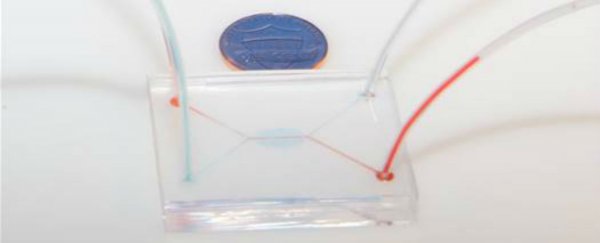Scientists around the world have managed to construct brains, lungs, skin and hair on a chip, and now an international team from South Korea and the US has successfully grown a mini human placenta replica so they can better understand the processes that occur within this crucial temporary organ during pregnancy.
"We believe that this technology may be used to address questions that are difficult to answer with current placenta model systems and help enable research on pregnancy and its complications," one of the researchers, Roberto Romero from the US National Institutes of Health, said in a press release.
Despite being part of every pregnancy ever, placentas have posed quite a challenge to researchers in the past. This is because placentas vary heavily from woman to woman, and studying one could be potentially risky for the foetus inside. Studies in the past have mainly relied on animal models and lab tests on human placenta cells, but you can really only learn about the physiological processes that go on inside an organ by observing it in situ.
As a result, no one's exactly sure how the placenta manages to regulate all the nutrients and waste travelling in and out of it, and knowing this could lead to better healthcare and monitoring during pregnancies.
According to Alexandra Ossola at Popular Science, the placenta-on-a-chip device was constructed using human tissues, which were used to build a "semi-permeable membrane between a chamber of maternal cells taken from a placenta, and a chamber of foetal cells taken from a sample of umbilical cord." Romero and his team tested its function by running glucose though it, and saw that it was able to transfer the nutrient from a hypothetical mother to her child. They're now working on improving the device to facilitate a range of tests and experiments pertaining to the movements of fluids through it.
The results have been published in the Journal of Maternal-Fetal & Neonatal Medicine.
"The chip may allow us to do experiments more efficiently and at a lower cost than animal studies," says Romero. "With further improvements, we hope this technology may lead to better understanding of normal placental processes and placental disorders."
